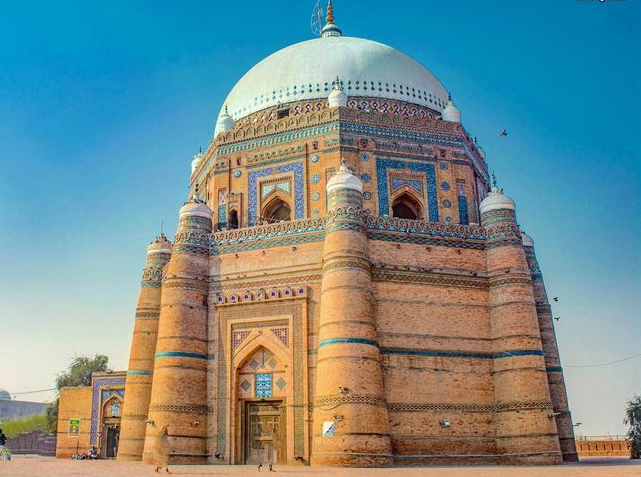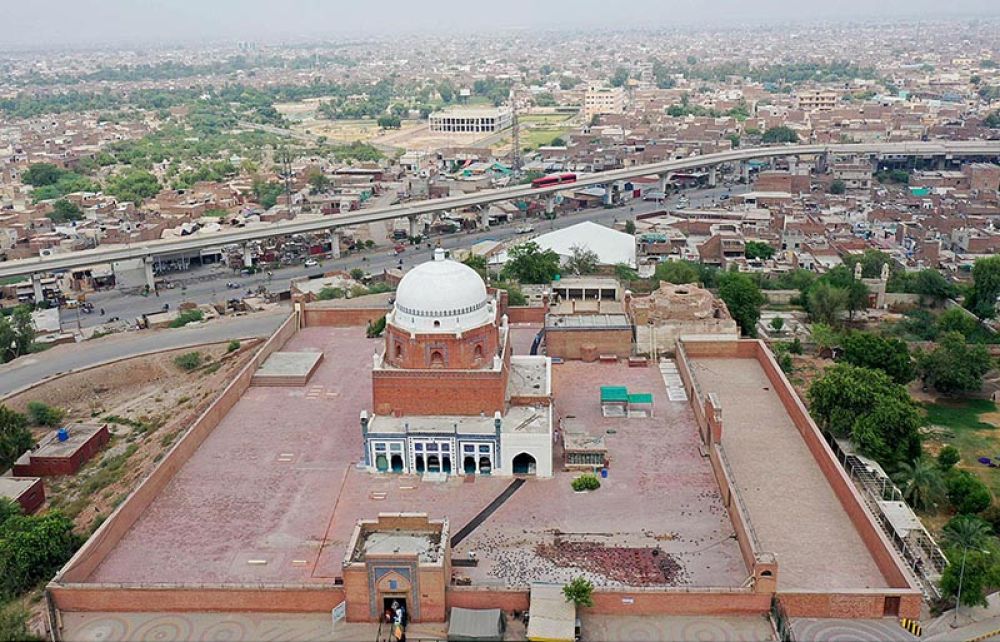When searching for travel attractions near me in Southern Punjab, Pakistan, one historical gem that stands out is the Tomb of Bahauddin Zakaria. Nestled in the heart of Multan, the city of saints, this sacred site is more than just a burial place — it symbolizes spirituality, architecture, and centuries-old Islamic history.
Whether you’re a history buff, a spiritual seeker, or simply someone curious about Pakistan’s rich cultural tapestry, visiting the tomb is an experience that stays with you.

Who Was Bahauddin Zakaria?
Hazrat Sheikh Bahauddin Zakaria (1170–1262) was a revered Sufi saint and Islamic scholar from the Suhrawardi order. Known for his wisdom, piety, and teachings of love and tolerance, he played a crucial role in spreading Islam in the Indian subcontinent, especially in Multan.
His Legacy:
- Founded the Suhrawardi Sufi order in South Asia.
- Advocated peaceful coexistence, knowledge, and spirituality.
- His lineage and teachings still influence thousands of followers today.
Architectural Significance of the Tomb
Built in the 13th century, the Tomb of Bahauddin Zakaria is a striking example of pre-Mughal Islamic architecture in the subcontinent.
Key Features of the Tomb:
- Octagonal Base: A signature design element in early Islamic architecture.
- Multani Blue Tiles: The iconic deep blue glazed tiles cover the façade, making it one of the earliest uses of this style.
- Three-Tier Structure: The design, with a square base, octagonal drum, and hemispherical dome, reflects Persian and Central Asian influences.
- Location: Built on a high mound within the old Multan Fort area, offering panoramic city views.
Visitors often compare it to other Sufi shrines in South Asia, but its unique blend of spirituality and artistic mastery sets it apart.

Why Visit the Tomb of Bahauddin Zakaria?
If you’re searching for travel attractions near me while in Multan or nearby areas, here are a few compelling reasons to visit:
1. Spiritual Atmosphere
Thousands of devotees visit the shrine daily to pay their respects. The peaceful vibe and devotional chants make it a serene retreat from the hustle and bustle of city life.
2. Historical Context
The tomb has stood for over 750 years and is a living museum. Every brick and tile tells a story of an era when Multan was a center of Islamic learning and Sufi thought.
3. Photography and Architecture
From intricate tile work to grand domes, it’s a haven for architecture enthusiasts and photographers.
4. Cultural Immersion
Visitors get a chance to interact with locals, experience Sufi rituals, and learn about the values of love, harmony, and peace.
What to Expect When You Visit
Practical Tips for Tourists:
- Entry Fee: Free for all visitors.
- Best Time to Visit: October to March for pleasant weather.
- Recommended Time: Early or late afternoon for optimal lighting and fewer crowds.
- Dress Code: Modest clothing is recommended as it is a religious site.
- Language: Urdu and Seraiki are widely spoken, but many guides understand basic English.
Nearby Facilities:
- Local guides are available for historical context.
- Food stalls and tea shops are just outside the complex.
- Parking is available near the fort entrance.
Real-World Experiences
Example:
Sarah, a tourist from Lahore, shared her experience:
“I visited the Tomb of Bahauddin Zakaria on a weekend trip to Multan. The peaceful aura and breathtaking tile work made it one of my favorite travel experiences in Pakistan. I’d list it among the region’s best travel attractions near me.”
Other Travel Attractions Near the Tomb
If you’re planning a trip to Multan, don’t miss these nearby spots:
🌟 Top 5 Travel Attractions Near Me in Multan:
- Tomb of Shah Rukn-e-Alam – Another magnificent Sufi shrine just a few minutes away.
- Multan Fort (Qila Kohna) – The surrounding tomb offers historical ruins and a city view.
- Hussain Agahi Bazaar – Famous for traditional handicrafts, souvenirs, and Multani sweets.
- Ghanta Ghar (Clock Tower) – A colonial-era landmark and a bustling shopping spot.
- Multan Museum – Exhibits artifacts from the region’s Islamic, Buddhist, and Hindu past.
How to Get There
From Major Cities:
- Lahore to Multan: Approx. 4–5 hours by road or 1 hour by flight.
- Islamabad to Multan: 6–7 hours by road, or direct flights are available.
- Karachi to Multan: Flights and trains operate daily.
Local Transportation:
- Ride-hailing apps (like Careem and InDrive) operate in Multan.
- Auto-rickshaws and taxis are also available for short distances.
Final Thoughts
The Tomb of Bahauddin Zakaria isn’t just a destination — it’s a journey into the soul of Multan, one of Pakistan’s most spiritually rich and culturally vibrant cities. Whether you’re exploring travel attractions near me or seeking spiritual peace, this tomb offers a unique blend of history, devotion, and beauty.
So, next time you’re in Punjab or planning a cultural trip across Pakistan, make sure this tomb is on your itinerary.








Add comment
You must be logged in to post a comment.